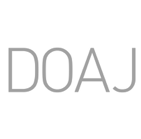
ISSN: 0018-442X
Journal Home
Journal Guideline
HOMO- Journal of Comparative Human Biology Q2 Unclaimed
HOMO- Journal of Comparative Human Biology is a journal indexed in SJR in Medicine (miscellaneous) and Anthropology with an H index of 40. It has an SJR impact factor of 0,276 and it has a best quartile of Q2. It has an SJR impact factor of 0,276.
Type: Journal
Type of Copyright:
Languages:
Open Access Policy:
Type of publications:
Publication frecuency: -



- €
Inmediate OANPD
Embargoed OA- €
Non OAMetrics
0,276
SJR Impact factor40
H Index4
Total Docs (Last Year)38
Total Docs (3 years)345
Total Refs26
Total Cites (3 years)37
Citable Docs (3 years)1.17
Cites/Doc (2 years)86.25
Ref/DocOther journals with similar parameters
Clinical and Translational Oncology Q2
Neuro-Oncology Practice Q2
Revista de Saude Publica Q2
Human Vaccines and Immunotherapeutics Q2
British Journal of Nutrition Q2
Compare this journals
Aims and Scope
Best articles by citations
Influence of various factors on the measurement of multifrequency bioimpedance
View moreDental health and lifestyle in four early mediaeval juvenile populations: Comparisons between urban and rural individuals, and between coastal and inland settlements
View moreCraniofacial morphometric variation and the biological history of the peopling of Sardinia
View moreAssessing the effect of manual physical activity on proximal hand phalanges using Hellenistic and modern skeletal samples from Greece
View moreThe Watinglo mandible: A second terminal Pleistocene Homo sapiens fossil from tropical Sahul with a test on existing models for the human settlement of the region
View moreEstimation of sex in a contemporary Saudi population based on sternal measurements using multidetector computed tomography
View moreThe relationship between 19th century BMIs and family size: Economies of scale and positive externalities
View moreStudies on the progress of third-molar mineralisation in a Black African population
View moreBody mass index and body adiposity index in relation to percent body fat: A study in adult men of three endogamous groups of South Bengal
View moreFamily size, the physical environment, and socioeconomic effects across the stature distribution
View moreThe frequency and anatomical features of torus mandibularis in a Black South African population
View moreTall men with medium body fat mass percentage display more developmental stability
View moreThe Homo sapiens 'hemibun': Its developmental pattern and the problem of homology
View moreEntheseal changes and sexual division of labor in a North-African population: The case of the pre-Hispanic period of the Gran Canaria Island (11th-15th c. CE)
View moreThe maturation rate of girls living in rich and poor rural regions of Poland before and after the transformation of 1989
View moreAn evaluation of head position and craniofacial reference line variation
View moreStudy of lip print types among Nigerians
View moreEarly urbanization and mobility at Tell Brak, NE Syria: the evidence from femoral and tibial external shaft shape
View moreThe Bronze Age burials from Cova Dels Blaus (Vall d'Uixo, Castello, Spain): An approach to palaeodietary reconstruction through dental pathology, occlusal wear and buccal microwear patterns
View moreHeight, weight, body composition, and waist circumference references for 7- to 17-year-old children from rural Portugal
View moreSomatotype in 6-11-year-old Italian and Estonian schoolchildren
View moreThe reliability of osteometric techniques for the sex determination of burned human skeletal remains
View moreDo tribal communities show an inverse relationship between sickle cell disorders and glucose-6-phosphate dehydrogenase deficiency in malaria endemic areas of Central-Eastern India?
View moreWealth, inequality, and insolation effects across the 19th century white US stature distribution
View more
Comments